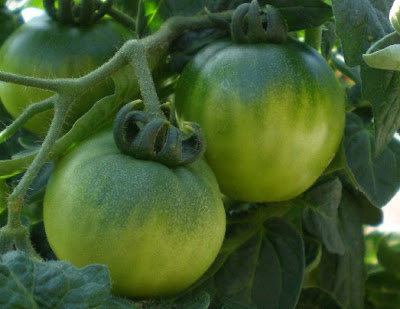 A blogger named Angela has just started "The Ultimate Guide to the San Fernando Valley". Determined to prove that there really is something to do in the Valley, she promises to write about dining, shopping, entertainment, special events, and other activities. I like her photos of her meals at local restaurants, and some really delicious pics from the Calabasas Farmers Market. A journalism student, Angela interviews people at the places she visits, and sometimes brings a video camera. Take a look.
A blogger named Angela has just started "The Ultimate Guide to the San Fernando Valley". Determined to prove that there really is something to do in the Valley, she promises to write about dining, shopping, entertainment, special events, and other activities. I like her photos of her meals at local restaurants, and some really delicious pics from the Calabasas Farmers Market. A journalism student, Angela interviews people at the places she visits, and sometimes brings a video camera. Take a look.
SFV Guide
 A blogger named Angela has just started "The Ultimate Guide to the San Fernando Valley". Determined to prove that there really is something to do in the Valley, she promises to write about dining, shopping, entertainment, special events, and other activities. I like her photos of her meals at local restaurants, and some really delicious pics from the Calabasas Farmers Market. A journalism student, Angela interviews people at the places she visits, and sometimes brings a video camera. Take a look.
A blogger named Angela has just started "The Ultimate Guide to the San Fernando Valley". Determined to prove that there really is something to do in the Valley, she promises to write about dining, shopping, entertainment, special events, and other activities. I like her photos of her meals at local restaurants, and some really delicious pics from the Calabasas Farmers Market. A journalism student, Angela interviews people at the places she visits, and sometimes brings a video camera. Take a look.
Nonedible Groceries?
 I just thought it was interesting that the grocery store classified cat food as "nonedible". I'm not going to tell the cats.
I just thought it was interesting that the grocery store classified cat food as "nonedible". I'm not going to tell the cats.
Homegrown
 My little "patio tomato" plant is progressing nicely. It sits in a pot at the edge of the patio, of course. I also have a pair of larger plants in another part of the garden that are just starting to develop fruit.
My little "patio tomato" plant is progressing nicely. It sits in a pot at the edge of the patio, of course. I also have a pair of larger plants in another part of the garden that are just starting to develop fruit. Home-grown tomatoes are easy and economical. And they taste so much better than any you will find in the supermarket that it can be hard to believe they are related.
It's not too late to get started. Plants are still available in local nurseries for less than $1.50 each. For a special treat, try the yellow pear variety. They look nice in salads, and are good enough to eat as snacks. If you have room for more than one plant, it can be fun and rewarding to experiment with one of the "heirloom" varieties.
Side-Blotched Lizard
 The common side-blotched lizard (Uta stansburiana) is one of the most abundant lizards in South California. They are able to survive in a variety of habitats, and prefer open, rocky areas. As with many other lizards in this region, their tails may break off if they are caught, and will grow back to some extent. Their life span is only about a year, and they produce eggs in the spring and summer. Active during the day, they eat small invertebrates. They should be very happy in this area, where we have a huge supply of crickets and grasshoppers.
The common side-blotched lizard (Uta stansburiana) is one of the most abundant lizards in South California. They are able to survive in a variety of habitats, and prefer open, rocky areas. As with many other lizards in this region, their tails may break off if they are caught, and will grow back to some extent. Their life span is only about a year, and they produce eggs in the spring and summer. Active during the day, they eat small invertebrates. They should be very happy in this area, where we have a huge supply of crickets and grasshoppers.
Subscribe to:
Comments (Atom)